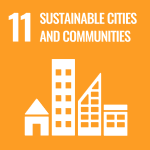Document Type
Capstone
Publication Date
4-13-2024
Keywords
healthcare, long term care facility, biophilia, biomimicry, wayfinding, controlled wandering, universal design
Description
Thousand Islands Residence repurposes urban infrastructure to minimise environmental impact and promote sustainable development, transforming into a community asset that integrates elderly care within the urban fabric. Inspired by pebbles, which symbolise tranquility and stability, the architectural design reflects flowing rivers, with curved pathways with intuitive wayfinding and communal spaces echoing vertically each other that foster connection and accessibility. The facility features private solariums, communal areas, and diverse amenities—including therapy rooms, art studios, and a café—promoting independence, dignified wandering, and community engagement. It is to be a reimagination of long-term care as a supportive, biophilic interior environment, that enriches both residents' lives and the surrounding, setting a precedent for future urban renewal projects.
Faculty
Faculty of Animation, Arts &Design (FAAD)
Program
Honours Bachelor of Interior Design
Awards/Nominations
Award of Excellence - Innovation in Design Thinking: Student Competition hosted by Interior Designers of Canada (IDC)
Copyright
© Erika Bae
Terms of Use
Terms of Use for Works posted in SOURCE.
Creative Commons License

This work is licensed under a Creative Commons Attribution 4.0 License.
Original Publication Citation
Bae, E. (2024). Thousand Islands Long Term Care Residence [Unpublished design proposal]. Faculty of Animation, Arts & Design, Sheridan College.
SOURCE Citation
Bae, Erika, "Thousand Islands Long Term Care Residence" (2024). Featured Student Work. 17.
https://source.sheridancollege.ca/swfaad_student_work/17



Comments
Fourth-year student Yoojeong (Erika) Bae earned an Award of Excellence for her Thousand Islands Long-term Care Residence design, a project submitted as part of her third-year Health Care Studio project. As part of the course, students are required to design a solution for an acute care unit in a healthcare environment, using evidence-based design and research.